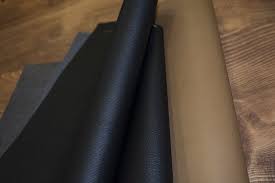
From Farm to Fashion: Unravelling the Journey of Leather Production
Welcome to the fascinating world of leather production! Have you ever wondered how that stylish leather jacket you’re wearing was made? The journey of leather production is a remarkable process that spans from farms to fashion. We’ll take a look at the various stages involved in the making of leather, uncovering the intriguing stories and emotions that accompany each step. So, buckle up and get ready for an informative and entertaining ride!
The Origins of Leather
Leather has a rich history that dates back to ancient times. It has been used by humans for thousands of years for its durability, versatility, and beauty. The earliest evidence of leather production can be traced back to the prehistoric era, where it was used for clothing, shelter, and tools. Over time, leather became an integral part of human civilization, with different cultures developing unique techniques for tanning and processing hides.
The Transformation into Fashion
Once the leather is ready, it is sent to manufacturers who transform it into a wide range of fashion items, including jackets, shoes, bags, belts, and accessories. Skilled craftsmen and women work diligently to cut, stitch, and assemble the leather pieces into fashionable and functional products. Each item is meticulously crafted, taking into consideration the unique characteristics of the leather and the desired design.
The journey of leather from farm to fashion is not just about the physical transformation of the material, but also the emotional connection it creates. Leather is often associated with luxury, style, and durability, making it a sought-after material in the fashion industry. Wearing a leather jacket or carrying a leather bag can evoke feelings of confidence, sophistication, and individuality. It’s a material that tells a story, reflecting the hard work, craftsmanship, and heritage behind it.
The Art of Tanning
Tanning is the process of transforming raw animal hides into leather, a durable and pliable material. The art of tanning involves several steps that require skill, patience, and expertise. The journey begins at the farm, where animals such as cows, sheep, and goats are raised for their meat and hides. Once the animals are slaughtered, the hides are carefully removed and transported to tanneries for further processing.
The Tanning Process
At the tannery, the hides undergo a painstaking series of treatments to cleanse them from impurities and preserve their delicate skin. The process starts with curing, where the hides are carefully salted to stave off decay and ready them for further handling. Next, the hides are lovingly soaked in water to gently wash away any lingering salt and dirt, as if giving them a refreshing bath. This is followed by the meticulous process of fleshing, where the hides are tenderly cleaned, with every speck of fat and flesh meticulously removed, akin to a delicate surgery.
Once the hides are clean, they are soaked in a mixture of water and tanning agents, which can be natural or synthetic. Tanning agents such as chromium, vegetable extracts, or other chemicals are used to bind the collagen fibers in the hide, giving it strength and stability. This process can take several weeks or even months, depending on the type of leather desired.
After tanning, the hides are stretched, dried, and softened through a process called conditioning. This involves mechanical processes such as rolling, pounding, or tumbling to make the leather more pliable and ready for further treatment. Finally, the leather is dyed and finished with various treatments to enhance its appearance, texture, and durability. The result is a high-quality leather that is ready for the next stage of its journey.







